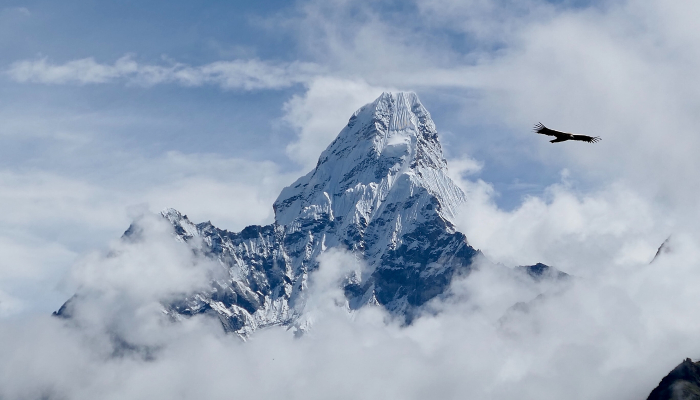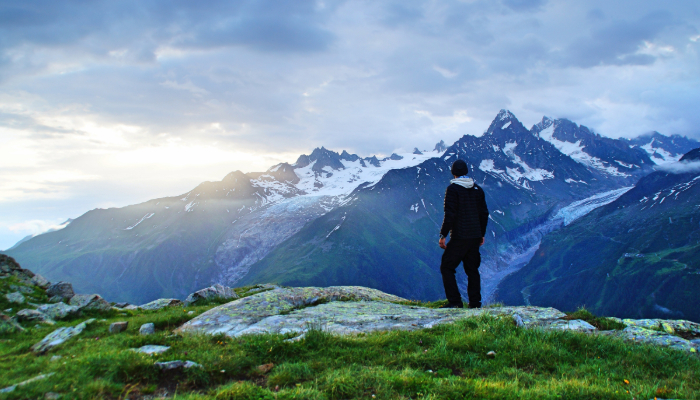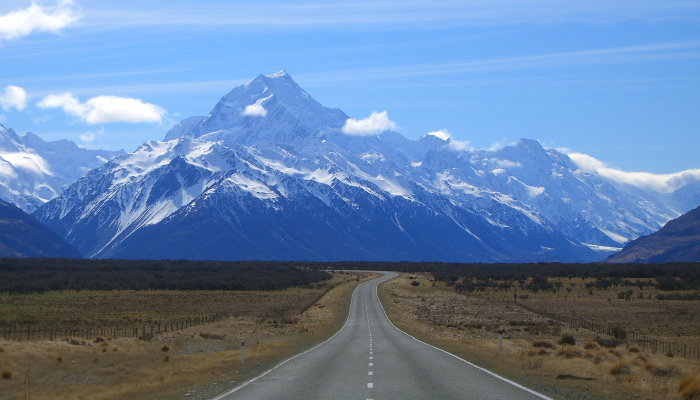Himalayas
Where can I find information about the Himalayas?
(Years 5-8)

Image: Himalayas by Ben Lowe on Unsplash.
Entry last updated: 10/07/25
Introduction
The Himalayas are a mountain range in Asia. It has many of Earth's highest peaks, including the highest, the summit of Mount Everest. The mountain range passes through the countries of India, Pakistan, China, Bhutan, Tibet and Nepal. Some of the peaks are permanently covered in snow, earning it the name Himalayas, meaning 'abode of snow' in Sanskrit.
General websites
Here are some websites that cover information like the formation, climate, people, flora and fauna of the Himalayan mountain ranges.
Britannica School is a part of EPIC, a collection of databases covering lots of different topics. It is put together especially for New Zealand school students and helps to answer questions like this.
Select Middle and type 'Himalayas' into the search bar.
Select to read Himalayas (mountains in Asia). This will tell you about the physical features, climate, plants and animals, and people and economy of this region.
You can always go up or down a level by selecting from the Reading Level at the top of the page.
Make sure you explore Images & Videos to learn out more about this topic.
The great thing about Britannica is that you can print, favourite, send, cite and listen to each of the articles.
Tips: To use the EPIC resources, you need a password from your school librarian. Or chat with one of our AnyQuestions librarians to help you online. Some EPIC databases may also be available through your public library.
This site has nearly 200,000 entries from credible sources like Oxford University Press and Columbia Encyclopedia. Includes
Type the search words 'Himalayas' into the search bar.
Try the links Himalayas Geology to read about the formation of this mountain range.
Tips: Some websites have advertisements (or ads) which ask us to buy something or tell us to ‘click here’. It’s best to ignore these ads and focus on the information we’re looking for.
If you go to About TED-Ed you will read that this site is all about videos supporting learning. The site is a growing library of videos put together for learners everywhere.
Enter the word 'Himalayas' into the search box.
Watch the video Why is Mt.Everest so tall?
Tips: Search words, or keywords, are the most important words in our question. Usually it’s better to leave out small words like ‘the’, ‘a’ and ‘of’ and just choose the main ones, eg Himalayas. We can always change our keywords or add more if we need to.
WWF (World Wide Fund for Nature)
WWF is an international non-government organisation that helps to conserve wildlife and the communities they live in.
Use the keywords 'Himalayas' to read the article Himalayas about facts, species, people and threats to this mountainous region.
Further down the results page, you can read about the Red pandas that live in the Eastern Himalayas.
Tips: Websites that have .org or .net in the address can have good information, but you need to assess how reliable it is. Check the About us link on the website, if you can find one. That can tell you what the organisation’s mission and values are.
National Geographic is known for its magazine. This section of the National Geographic website is to teach kids about the world and how it works.
Entering 'Himalayas' into the Explore all box will bring up a list of results.
Look through the results to read articles like Water Towers which is about how they help supply water to more than one billion people.
Watch the video History is in the Mud to find out about the climate in the past and what might happen in the future.
The popular video site YouTube has many videos about the Himalayas.
Entering 'Himalayas' in the search box brings up a long list of results. We recommend the following two that show local life and the scenery.
The Himalayas from 20,000 Feet by Teton Gravity Research.
The Himalayan Range by WildFilmsIndia.
Tips: You need to be aware that the information on YouTube is contributed by lots of different people. It can be a good way to learn more about a topic, but you need to be careful that the information is accurate. If you are using this site, it always pays to check the information against that on other sites or in books from the library.
New Zealand sites
Sir Edmund Hillary and Sherpa Tenzing Norgay made headlines around the world when they climbed Mt. Everest. The websites below will lead you to more information on this conquest and the climbers.
Te Ara: The Encyclopedia of New Zealand
Owned by the Ministry of Culture and Heritage, Te Ara answers all questions about the people, environment, history, culture and society of New Zealand. Information is well-researched and reliable.
Entering 'Himalayas' into the search box will bring up search results.
Choose New Zealand Climbers Overseas to read about Sir Edmund Hillary and Mount Everest.
There is also a link on the page to a video called Edmund Hillary Climbs Mount Everest.
NZ History is another great website for information about Aotearoa New Zealand.
Find the section on Culture and Society from the home page.
The scroll down the page to The great outdoors to find the story on Edmund Hillary. to read his life story, including his mountaineering days.
Tips: We like sites like this because they’re reliable. You can tell because of their web address – they have either .govt or .ac, meaning they are from government or educational organisations. They’re also New Zealand sites, so relevant for us.
Books
These books will give you more information about the Himalayas and the Himalayan region.
The Himalayas by Molly Aloian
The highest peak: how Mount Everest formed by Jenna Tolli
Nepal by Bradley Mayhew, Lindsay Brown, Paul Stiles
Everest by Angela Sangma Francis
Climbing the Himalayan Mountains by Sonya Newland.
SCIS no. 5359474
Topics covered
Related content

Countries of the world
Where can I find information about the different countries in the world?

Sir Edmund Hillary (1919–2008)
Where can I find information about Sir Edmund Hillary?

Explorers and exploration
Where can I find information about famous explorers and where they explored?

Adaptation
Where can I find information about plant and animal adaptation?

Wonders of the World
Where can I find information about the Wonders of the World?

Mountains (New Zealand)
Where can I find information about New Zealand mountains?

Animals
Where can I find information about different animals?
